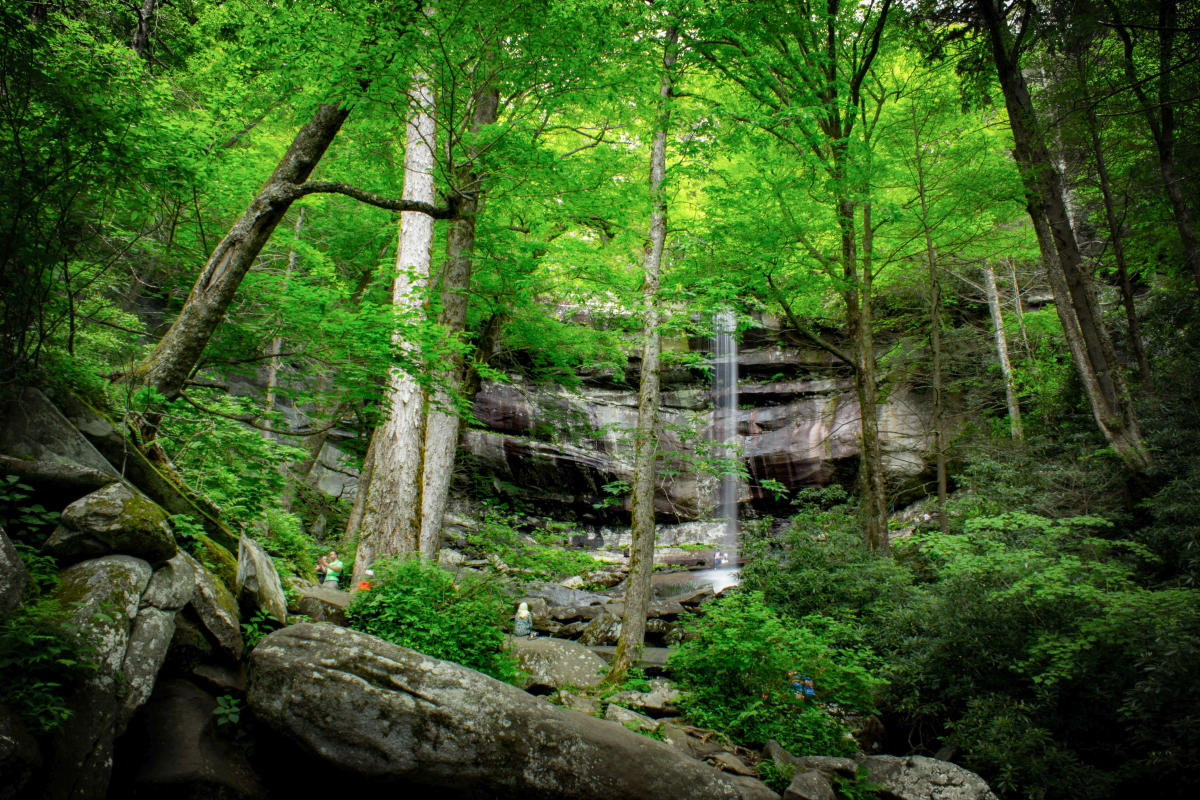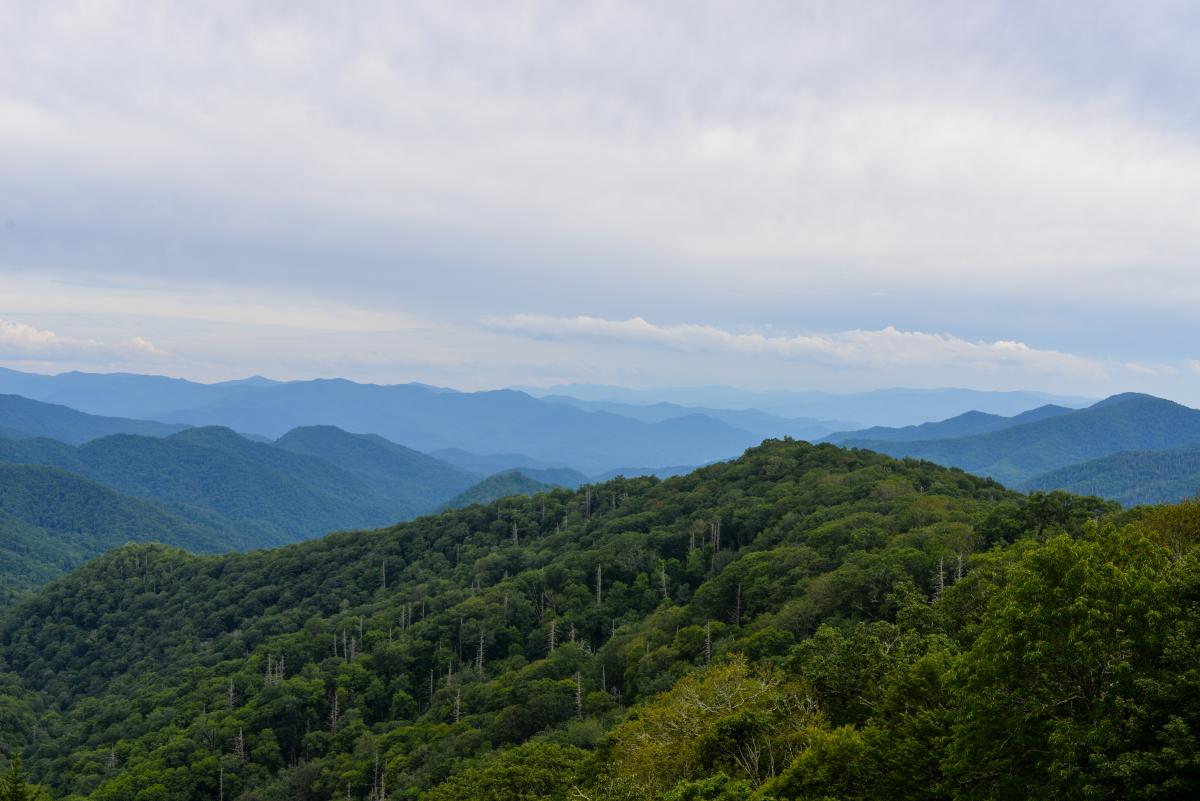Great Smoky Mountains
Cascading waterfalls, roaming wildlife and a view that stretches out over 500,000 acres – this is the country’s most-visited national park. Vacationers often start in Gatlinburg and make their way to one of the park’s famous paths where they can find everything they’ve been looking for. A hike through the Great Smoky Mountains – whether it be on the Appalachian Trail itself, a wildflower walk, or a trip to one of the many waterfalls – will leave you with a smile and a lasting impression. Because the experience changes season to season, there’s always a new scene to come explore.

Hiking And Waterfalls
800 Miles Of Perfect
The best way to experience the Smoky Mountains is to do what the original settlers and explorers did: hit the trails. From the original Appalachian Trail to breathtaking wildflower walks, there are 150 Smoky Mountain trails covering 800 miles of pristine backcountry. Waterfalls, wildlife, valleys and vistas are everywhere. Learn more

Wildlife & Nature
Undisturbed For Over A Million Years
Thousands of species of plant and animal life have been documented in the Smokies, and more are being discovered every year. Because the last Ice Age didn’t get this far south, and the sea never came this far inland, flora and fauna have been thriving and diversifying here for millennia. When you venture into one of the world’s few International Biosphere Reserves, black bears and wildflower blooms are only the beginning. Bring your binoculars, enjoy the show, and read more about what to expect in our Guide.

Scenic Drives
This Is Why Sunday Drives Were Invented.
There are three entrances to Great Smoky Mountains National Park from Gatlinburg, and every one takes you into a section of the 800 square miles of unspoiled Appalachia. Every trip to the Smokies begins with a drive on the Newfound Gap Road, so pack a picnic and see highlights along the way, including the Sugarlands Visitor Center, Newfound Gap, Clingman’s Dome Road, Ocanaluftee Valley and Mingus Mill. Wildflower watchers love exploring the Greenbrier, a six-mile road featuring the most colorful flora in the Park. Porter’s Creek is particularly vibrant in March and April. If you’re feeling adventurous, hop out, hike four miles, and witness the tallest falls in the Smokies at Ramsey Cascades. Whether you arrive during the rich, green days of spring and summer, the crazy quilt of autumn color or the sparkling white of winter, your drive through the roads of Great Smoky Mountains National Park is guaranteed to be an adventure in itself.

Picnic In The Park
Break Bread With Family And Friends.
Gatlinburg is home to many scenic and accessible spots that are just perfect for bringing back the lost joys of picnicking. Admire the antique architecture of century-old cabins and mills at Cades Cove picnic area. Soak up the scenery of the Little Pigeon River or share a meal at one of several other designated picnic spots near Gatlinburg, including Metcalf Bottoms. It’s a great way to relax and unwind during your vacation.

Hiking And Waterfalls
800 Miles Of Perfect
The best way to experience the Smoky Mountains is to do what the original settlers and explorers did: hit the trails. From the original Appalachian Trail to breathtaking wildflower walks, there are 150 Smoky Mountain trails covering 800 miles of pristine backcountry. Waterfalls, wildlife, valleys and vistas are everywhere. Learn more

Wildlife & Nature
Undisturbed For Over A Million Years
Thousands of species of plant and animal life have been documented in the Smokies, and more are being discovered every year. Because the last Ice Age didn’t get this far south, and the sea never came this far inland, flora and fauna have been thriving and diversifying here for millennia. When you venture into one of the world’s few International Biosphere Reserves, black bears and wildflower blooms are only the beginning. Bring your binoculars, enjoy the show, and read more about what to expect in our Guide.

Scenic Drives
This Is Why Sunday Drives Were Invented.
There are three entrances to Great Smoky Mountains National Park from Gatlinburg, and every one takes you into a section of the 800 square miles of unspoiled Appalachia. Every trip to the Smokies begins with a drive on the Newfound Gap Road, so pack a picnic and see highlights along the way, including the Sugarlands Visitor Center, Newfound Gap, Clingman’s Dome Road, Ocanaluftee Valley and Mingus Mill. Wildflower watchers love exploring the Greenbrier, a six-mile road featuring the most colorful flora in the Park. Porter’s Creek is particularly vibrant in March and April. If you’re feeling adventurous, hop out, hike four miles, and witness the tallest falls in the Smokies at Ramsey Cascades. Whether you arrive during the rich, green days of spring and summer, the crazy quilt of autumn color or the sparkling white of winter, your drive through the roads of Great Smoky Mountains National Park is guaranteed to be an adventure in itself.

Picnic In The Park
Break Bread With Family And Friends.
Gatlinburg is home to many scenic and accessible spots that are just perfect for bringing back the lost joys of picnicking. Admire the antique architecture of century-old cabins and mills at Cades Cove picnic area. Soak up the scenery of the Little Pigeon River or share a meal at one of several other designated picnic spots near Gatlinburg, including Metcalf Bottoms. It’s a great way to relax and unwind during your vacation.

